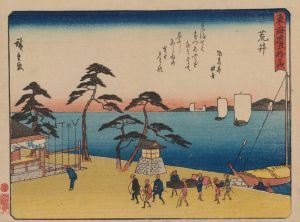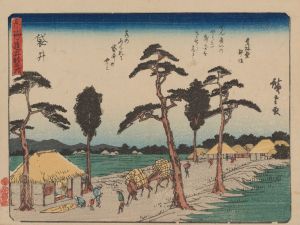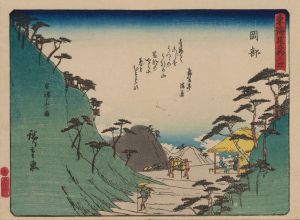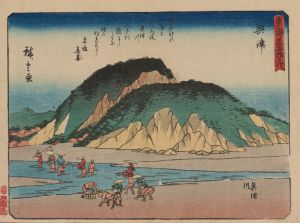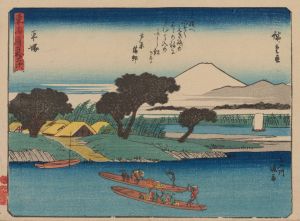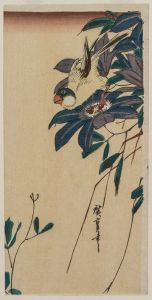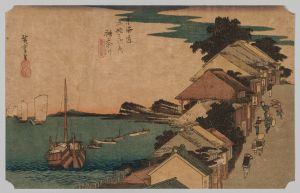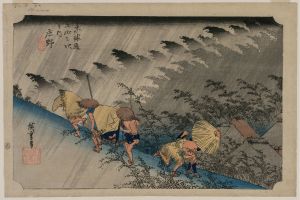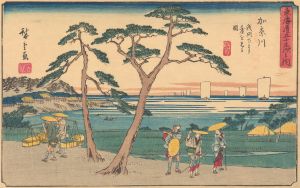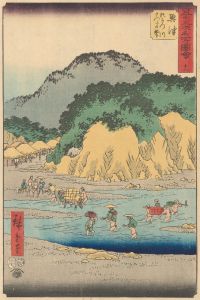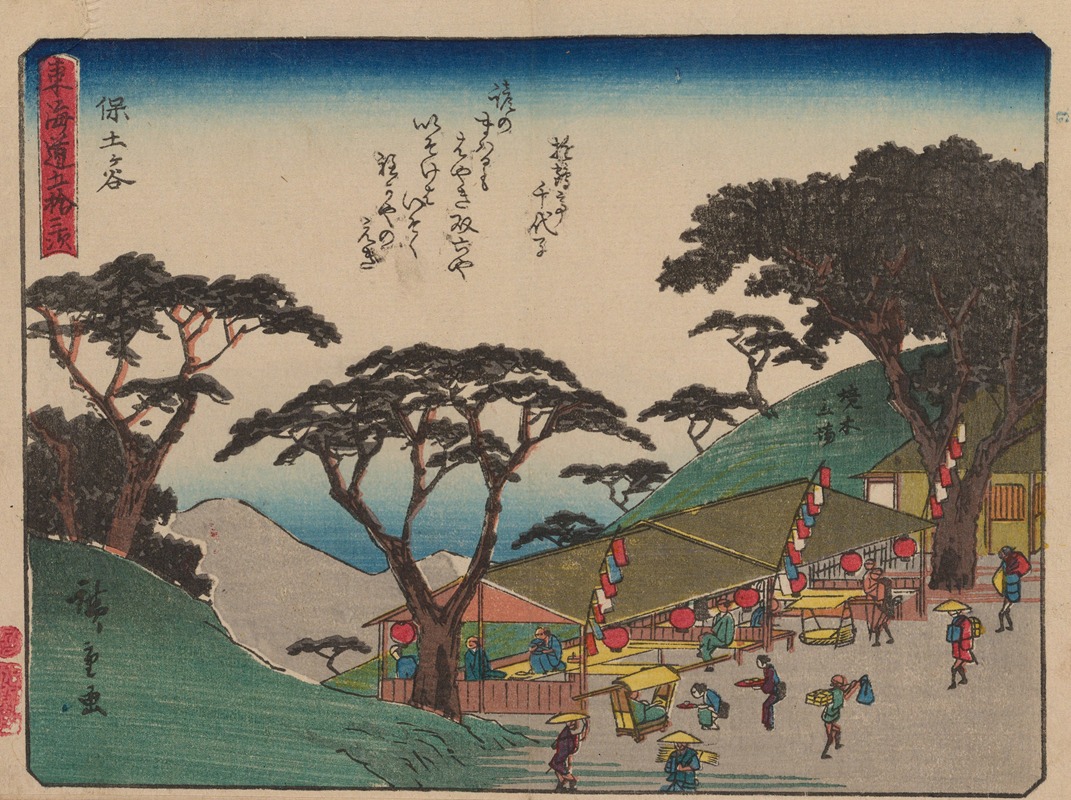
Tokaido gojusantsugi, Pl.05
A hand-painted replica of Andō Hiroshige’s masterpiece Tokaido gojusantsugi, Pl.05, meticulously crafted by professional artists to capture the true essence of the original. Each piece is created with museum-quality canvas and rare mineral pigments, carefully painted by experienced artists with delicate brushstrokes and rich, layered colors to perfectly recreate the texture of the original artwork. Unlike machine-printed reproductions, this hand-painted version brings the painting to life, infused with the artist’s emotions and skill in every stroke. Whether for personal collection or home decoration, it instantly elevates the artistic atmosphere of any space.
Andō Hiroshige, a renowned Japanese ukiyo-e artist of the Edo period, is celebrated for his landscape prints and his series "The Fifty-three Stations of the Tōkaidō" (Tōkaidō Gojūsan-tsugi). This series, created between 1833 and 1834, is one of Hiroshige's most famous works and depicts the scenic journey along the Tōkaidō road, which connected Edo (modern-day Tokyo) to Kyoto. The series consists of 55 prints, including the starting point, Nihonbashi in Edo, and the terminus, the Sanjō Bridge in Kyoto, along with the 53 stations in between.
Plate 05 of this series, known as "Totsuka: Motomachi Fork" (Totsuka: Motomachi Betsudō), captures the essence of travel and daily life during the Edo period. Totsuka was the fifth station on the Tōkaidō road, located in what is now part of Yokohama in Kanagawa Prefecture. This print, like others in the series, reflects Hiroshige's keen observation of the landscape and the people who inhabited it.
In "Totsuka: Motomachi Fork," Hiroshige illustrates a scene bustling with activity. The composition typically features travelers and locals engaged in various activities, set against the backdrop of the Japanese countryside. The fork in the road at Totsuka was a notable landmark, where travelers could rest and prepare for the next leg of their journey. Inns and teahouses were common sights at such stations, providing respite and refreshment for weary travelers.
Hiroshige's use of color and perspective in this print is characteristic of his style. He employed a technique known as bokashi, a method of color gradation that adds depth and atmosphere to the scene. The print likely showcases a harmonious blend of natural and human elements, with travelers depicted in traditional Edo-period attire, interacting with the environment and each other.
The Tōkaidō series was produced using woodblock printing, a popular method in Japan that allowed for the mass production of artworks. This technique involved carving an image into a wooden block, applying ink, and then pressing paper onto the block to create the print. Hiroshige's collaboration with skilled carvers and printers was essential in bringing his artistic vision to life.
Hiroshige's work, including "Totsuka: Motomachi Fork," had a significant impact on both Japanese and Western art. His ability to capture the transient beauty of nature and the subtleties of human interaction influenced many artists, including the Impressionists in Europe. The Tōkaidō series, in particular, remains a testament to Hiroshige's mastery of the ukiyo-e genre and his contribution to the cultural heritage of Japan.
Today, Hiroshige's prints are highly regarded and continue to be studied and appreciated for their artistic and historical value. They offer a glimpse into the Edo period's travel culture and the landscapes that shaped Japan's history. "Totsuka: Motomachi Fork," as part of this iconic series, exemplifies Hiroshige's skill in capturing the spirit of a bygone era through the medium of woodblock print.






